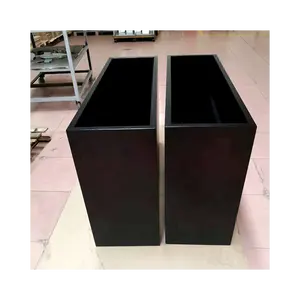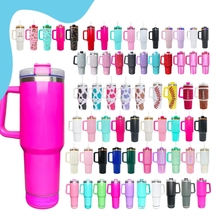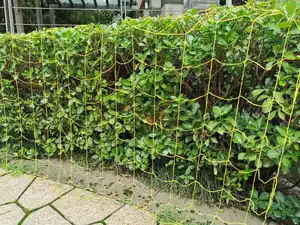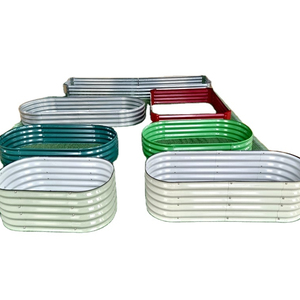In the spheres of horticulture and interior embellishment, garden planters epitomize the harmonious blend of practicality and visual charm. These vessels, crafted to accommodate an array of plant life, span from classic flower pots to the sophisticated self-watering planters. The quintessential purpose of a garden planter is to foster a nurturing habitat for plant growth while enhancing the aesthetic of its surroundings.
Types and Materials of Garden Planters
A plethora of garden planters exists, each tailored to specific horticultural needs and stylistic tastes. Ubiquitous flower pots are cherished for their ease of movement and simple charm, whereas planter boxes provide a more defined aesthetic, perfect for demarcating spaces or borders. Wall planters capitalize on vertical space to beautify areas with limited ground, and large outdoor planters assert their presence in both public and private gardens. For those pressed for time, self-watering planters diminish the need for frequent watering. Each variant, from indoor plant pots to garden boxes, possesses distinct features that cater to different decorative and functional roles across diverse environments.
Structure and Operation of Garden Planters
The architecture of garden planters is ingeniously devised to optimize plant well-being and gardener convenience. A standard planter may include a supportive base for the soil and vegetation, coupled with a drainage system to avert excess moisture. Self-watering planters are equipped with a reservoir to ensure a steady hydration supply, while large outdoor planters might incorporate trellises for climbing flora. These design considerations guarantee that the planters can support a wide range of botanical life, from robust shrubs to fragile perennials.
Materials and Properties
The selection of materials for garden planters is informed by their longevity, visual appeal, and environmental footprint. Corten steel is valued for its distinctive patina and durability, while aluminum provides a resilient yet featherweight alternative. Wooden planters exude a rustic vibe and can be treated for decay resistance. Polypropylene is a popular choice for its adaptability and resistance to fractures, suitable for both indoor plant pots and outdoor planters. Each material introduces its own advantages, such as sustainability, ease of customization, or affordability, offering a broad spectrum of options to meet various requirements.
Business Usages and Applications
Garden planters find utility in a range of commercial contexts, from retail environments like supermarkets and department stores to hospitality venues such as hotels and eateries. In corporate landscapes, large outdoor planters can act as organic partitions or foster a welcoming ambiance for patrons. E-commerce outlets focusing on home decor can tap into the burgeoning trend of domestic gardening and design by offering an assortment of garden containers, thus generating business value and augmenting consumer contentment.
Functions and Tasks
The fundamental role of garden planters is to host vegetation, but they also shield roots from extreme temperatures and pests. Self-watering planters maintain optimal moisture levels, crucial for plant vitality. Designs for outdoor planters may incorporate mobility features like casters, enabling effortless repositioning to maximize sunlight exposure or to safeguard plants in inclement weather.
Features and Unique Selling Points
Garden planters boast a variety of attributes that bolster their allure. Self-watering planters provide ease of care, planter boxes can be designed for space-efficient stacking, and garden pots might integrate LED lighting to highlight the plants nocturnally. These distinctive selling points not only set the products apart from competitors but also address the particular wishes of niche gardening enthusiasts.
Benefits and Positive Outcomes
The advantages of employing garden planters are numerous. They permit the cultivation of green spaces in confined areas, such as flats or offices. Utilizing garden containers can also elevate the visual appeal of a locale, contributing to psychological well-being and improved air quality. For enterprises, they present an opportunity to introduce greenery into their premises in a manageable and stylish manner, thus enhancing the overall client experience.
How to Use Garden Planters Effectively
To utilize garden planters effectively, one must comprehend the requirements of the plants and the environmental conditions. For self-watering planters, it is crucial to replenish the reservoir adequately without overwatering. When deploying outdoor planters, consider the sunlight and wind exposure of the area and select plant species that will flourish under those conditions. For indoor plant pots, be conscious of the watering needs and the potential for water damage to indoor surfaces.
How to Choose the Right Garden Planter
Choosing the appropriate garden planter entails evaluating the size required for the plant's growth, the material's suitability for the local climate, and the design's harmony with existing decor. For large outdoor planters, it is essential to select materials that can endure the elements, while for indoor plant pots, one should consider the weight and drainage capabilities to safeguard interior surfaces.
How to Clean and Maintain Garden Planters
Regular cleaning and maintenance of garden planters are vital for both the longevity of the container and the health of the plants. Routine cleansing prevents the accumulation of pathogens, while maintenance tasks may include treating wooden planters to avert rot or repainting metal planters to inhibit rust. For self-watering planters, it is imperative to clean the reservoir to avoid algae formation.
How to Install Garden Planters for Maximum Impact
The strategic installation of garden planters is key to achieving maximum visual impact and promoting plant health. Factors to consider include the planter's exposure to sunlight, its weight, and the type of surface it will rest on. For wall planters, secure attachment is crucial to prevent mishaps, while garden pots may necessitate a stable foundation to withstand gusty conditions.
What are the best practices for using garden planters in commercial spaces?
Optimal practices for incorporating garden planters in commercial areas include aligning planter selections with the brand's ethos and the functional needs of the space. In areas of high footfall, robustness and stability are paramount, whereas in more secluded spots, the emphasis may lie on the design and the ambiance the planters contribute.
How do garden planters contribute to sustainable gardening practices?
Garden planters support sustainable gardening by facilitating improved water stewardship, diminishing the necessity for herbicides and pesticides, and utilizing eco-friendly materials. Self-watering planters help conserve water, while the employment of recyclable materials in plant pots resonates with environmentally conscious principles.
Can garden planters be customized to fit specific design themes?
Many manufacturers offer customization services for garden planters to align with particular design motifs or branding needs. This can encompass a choice of colors and finishes to the integration of logos or custom shapes, ensuring that the planters for garden settings are as distinctive as the environments they grace.








































 浙公网安备 33010002000092号
浙公网安备 33010002000092号 浙B2-20120091-4
浙B2-20120091-4